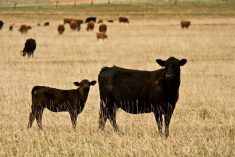Compared to last week, yearlings traded $3 to as much as $6 higher. While many auction barns were on holidays, buyers had a full deck of orders for the limited supplies on hand. Many buyers and few sellers characterized the market environment.
The quality of cattle is quite variable at this time of year but there was little slippage on fleshier yearlings. Few feeders are on offer with favourable pasture conditions in most areas of Western Canada. Alberta packers were buying fed cattle in the range of $255-$260 on a dressed basis last week, up $5 from seven days earlier. Feedlot margins are now hovering in positive territory and there appears to be renewed optimism for the fall period.
Read Also

U.S. grains: Soy futures post biggest monthly gain in nearly five years on China trade optimism
U.S. soybean futures climbed to a 15-month high and posted their biggest monthly gain in nearly five years on Friday following a rally fueled by the prospect of revived exports to China.
In central Alberta, red mixed steers weighing 925 lbs. sold for $188. In southern Alberta, larger-frame mixed steers weighing just over 820 lbs. were quoted at psychological level of $200, landed in the feedlot; heifers averaging 830 lbs. were reported at $180. Small groups (five or fewer) and stragglers were available in Manitoba and Saskatchewan, which made the market hard to define. In southern Manitoba, 850-lb. mixed steers were averaging $180, while 850-lb., various-quality heifers were reported at $160.
Calf markets were relatively unchanged in Alberta but prices in Saskatchewan and Manitoba were $3-$7 below week-ago levels in some cases. Above-normal temperatures caused major feedlot operations to shy away from the lighter categories. Local operations were the main buyers because no one wants to transport calves long distances. A small group of mixed medium-frame steers averaging just over 620 lbs. sold for $218 in central Alberta and mixed heifers averaging 675 lbs. were quoted at $191.
Feed barley prices continue to grind lower due to the sharp year-over-year increase in seeded acreage. Canadian barley production has potential to reach 9.3 million tonnes, up from the 2017 crop size of 7.9 million. Feedlots are banking on lower feed grain costs this fall.













